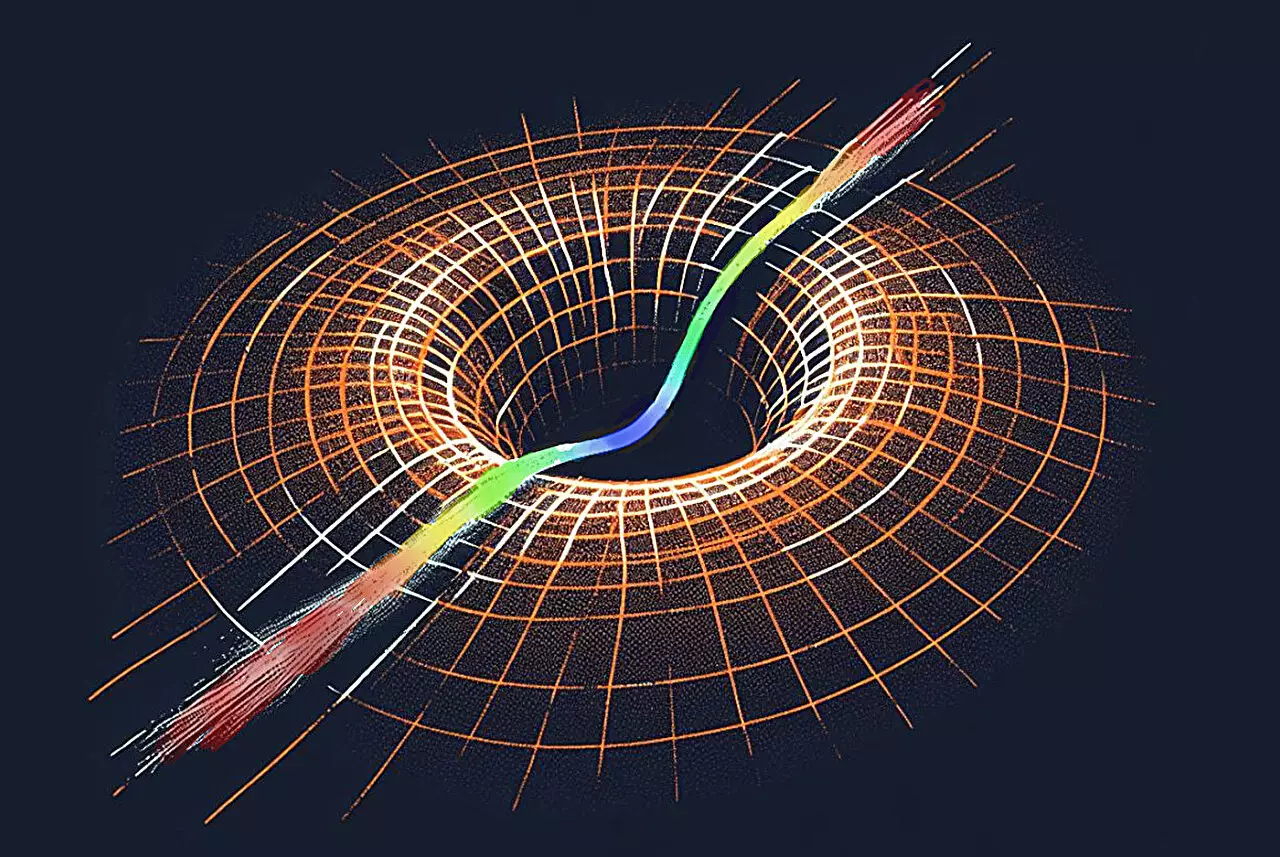In the realm of wave mechanics, the interaction between light and matter has long been a topic of interest. It is well-known that when light encounters a medium, its speed appears to slow down. However, a recent study conducted by researchers from the University of Eastern Finland and Tampere University has shed new light on this phenomenon. They have introduced the concept of accelerating waves and have found that these waves exhibit a well-defined direction of time, a so-called “arrow of time.” Moreover, their work also provides insights into the conservation of energy and momentum in accelerating waves. This article aims to critically analyze their research and explore the implications of their findings.
Assistant Professor Matias Koivurova from the University of Eastern Finland was the driving force behind the exploration of accelerating waves. He began by considering the possibility that the speed of a wave could vary with time, a departure from the assumption of a constant wave speed. This idea led to the formulation of what the researchers refer to as the accelerating wave equation. However, solving this equation posed a significant challenge. It was only through collaboration with the Theoretical Optics and Photonics group, led by Associate Professor Marco Ornigotti from Tampere University, that progress was made.
One of the breakthrough results of this research is the identification of a well-defined arrow of time in accelerating waves. In contrast to the macroscopic arrow of time associated with increasing entropy, the direction of time for single particles had remained ambiguous. However, the accelerating wave equation provides a solution that only allows for time to flow forward. This discovery suggests that even single particles behave as though they possess a fixed direction of time.
The conservation of energy and momentum has been a topic of debate in physics, particularly with regards to the behavior of light when it enters a medium. The Abraham-Minkowski controversy revolves around the question of whether the momentum of light increases or decreases upon entering a medium. Through their research, Koivurova and Ornigotti demonstrate that from the perspective of the wave, its momentum remains conserved. This conservation is made possible by the inclusion of relativistic effects in their framework.
One of the intriguing phenomena observed in the research is the occurrence of time dilation and length contraction in accelerating waves. The researchers found that due to the wave experiencing a different time from the laboratory time, these relativistic effects come into play. The perception of the momentum of the wave not being conserved within a material medium can be attributed to length contraction. In essence, the conservation of momentum in accelerating waves is maintained by reconciling it with the concepts of proper time and relativistic effects.
The accelerating wave equation developed by Koivurova and Ornigotti has broader implications in the field of wave mechanics. It provides a means to analytically model waves in time-varying media, where light encounters sudden and uniform changes in the material properties. Previously, only numerical solutions were available for such situations. The new framework allows for the study of exotic materials like disordered photonic time crystals, where waves experience exponential changes in speed and energy. The violation of energy conservation observed in these scenarios can be attributed to the curved space-time that the pulse of light encounters.
The research conducted by Koivurova and Ornigotti on accelerating waves has provided valuable insights into fundamental aspects of wave mechanics. Their discovery of the arrow of time in these waves highlights the presence of a well-defined direction of time even at the level of single particles. Additionally, their framework allows for the conservation of energy and momentum in accelerating waves by incorporating relativistic effects. The ability to analytically model time-varying media opens doors to studying a wide range of phenomena previously accessible only through numerical simulations. This research not only enhances our understanding of wave behavior but also has implications for optical effects and the testing of the general theory of relativity.



Leave a Reply